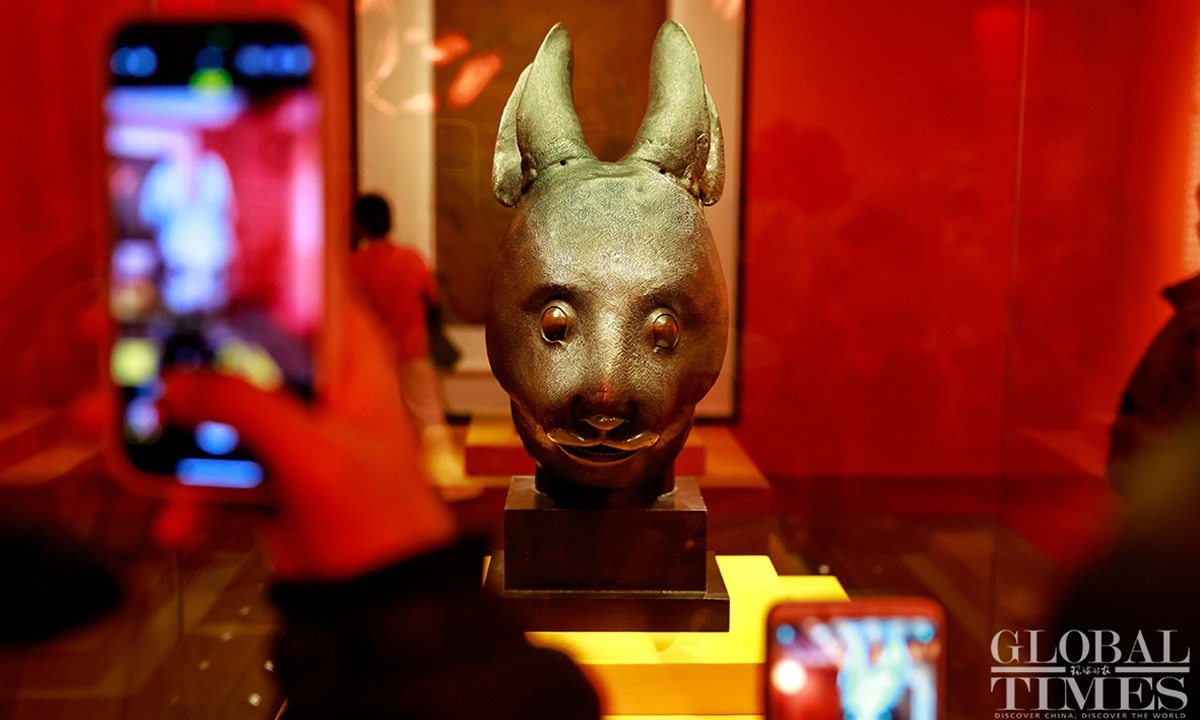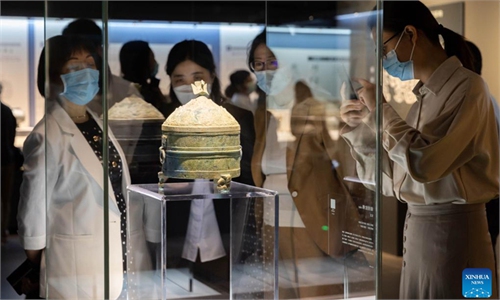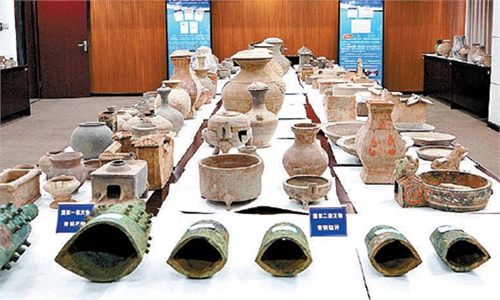ARTS / CULTURE & LEISURE
China’s top court and authorities vow to implement sound legal protection of cultural relics

Themed on celebrating the Year of the Rabbit, 2023 Chinese New Year Exhibition kicks off at National Museum of China in Beijing on Wednesday. Over 80 pieces of cultural relics are put on display to demonstrate the profound and colorful Chinese rabbit cultures, zodiac cultures, auspiciousness cultures and cultures of celebrating Spring Festival. Photo: Li Hao/GT
Since China signed agreements to prevent theft, excavation and illegal entry and exit of cultural relics with 24 countries after the 18th National Congress of the Communist Party of China in 2012, more than 1,800 relics lost overseas have returned to the motherland, Chinese officials said at a press conference held at China's top court on Tuesday.
Guan Qiang, deputy head of the National Administration of Cultural Heritage, called the return of these lost cultural relics a satisfying breakthrough that has "inspired national spirit, boosted national morale, and strengthened cultural confidence."
In 2019 during his state visit to Italy, Chinese President Xi Jinping and then Italian prime minister Giuseppe Conte witnessed the exchange of certificates on the return of 796 sets of Chinese cultural relics and artworks in Rome. These cultural relics date from the Neolithic age to the more recent Qing Dynasty (1644-1911).
That same year, eight ancient Chinese bronze utensils dating to 2,500 years ago were returned from Japan. Previously, China's cultural relics authority discovered the set had been stolen from the Tomb of the Earl Kefu of the Zeng State in Central China's Hubei Province and then smuggled abroad. Chinese government authorities worked together to recover the eight stolen relics from Japan through the Convention on the Means of Prohibiting and Preventing the Illicit Import, Export and Transfer of Ownership of Cultural Property, commonly known as the 1970 Convention.
In 1989, China joined the 1970 Convention. Aimed at preventing the smuggling of cultural property, the convention has been endorsed by 141 countries and regions as of 2021. In addition, China in 2022 also signed bilateral agreements or memorandums of understanding on relics repatriation with 24 countries, including the US, Italy, Switzerland and Pakistan.
Huo Zhengxin, a professor of law and vice dean of the Faculty of International Law at the China University of Political Science and Law, told the Global Times on Wednesday that the 1970 Convention has some limitations, including vague wording, a lack of mechanism for its supervision and implementation, and spotty adherence among signature countries.
"The bilateral agreements were more targeted. We need to promote bilateral treaties with more countries," Huo said.
According to Guan, over the past decade, China's cultural heritage authorities have been working closely with judicial agencies to strengthen the protection of relics by issuing guidelines and launching campaigns. Since 2012, they have jointly handled 11,000 criminal cases and retrieved 170,000 cultural relics.
Authorities represented by the Supreme People's Court also published 15 representative judicial cases regarding the protection of cultural relics and cultural heritage at the press conference.
Yang Linping, vice president of the Supreme People's Court, noted that courts nationwide have heard 12,407 cases concerning relics and heritages since 2016 and also started hearing public-interest litigations in this regard in 2018.
The Supreme People's Court, the National Cultural Heritage Administration and the cultural heritage branch of the National Judicial Research Society have been working to promote the revision of cultural relics protection laws, educate the public on cultural relics protection laws and provide professional guidance for the establishment of cultural relics protection systems.
"China is working harder to handle cases involving relics and heritages through effec-tive laws both in China and abroad. With the improvement of China's overall national strength, there are sure to be more gratifying results in combating cross-border traffick-ing of cultural relics and domestic cultural relic crime," said Huo.




